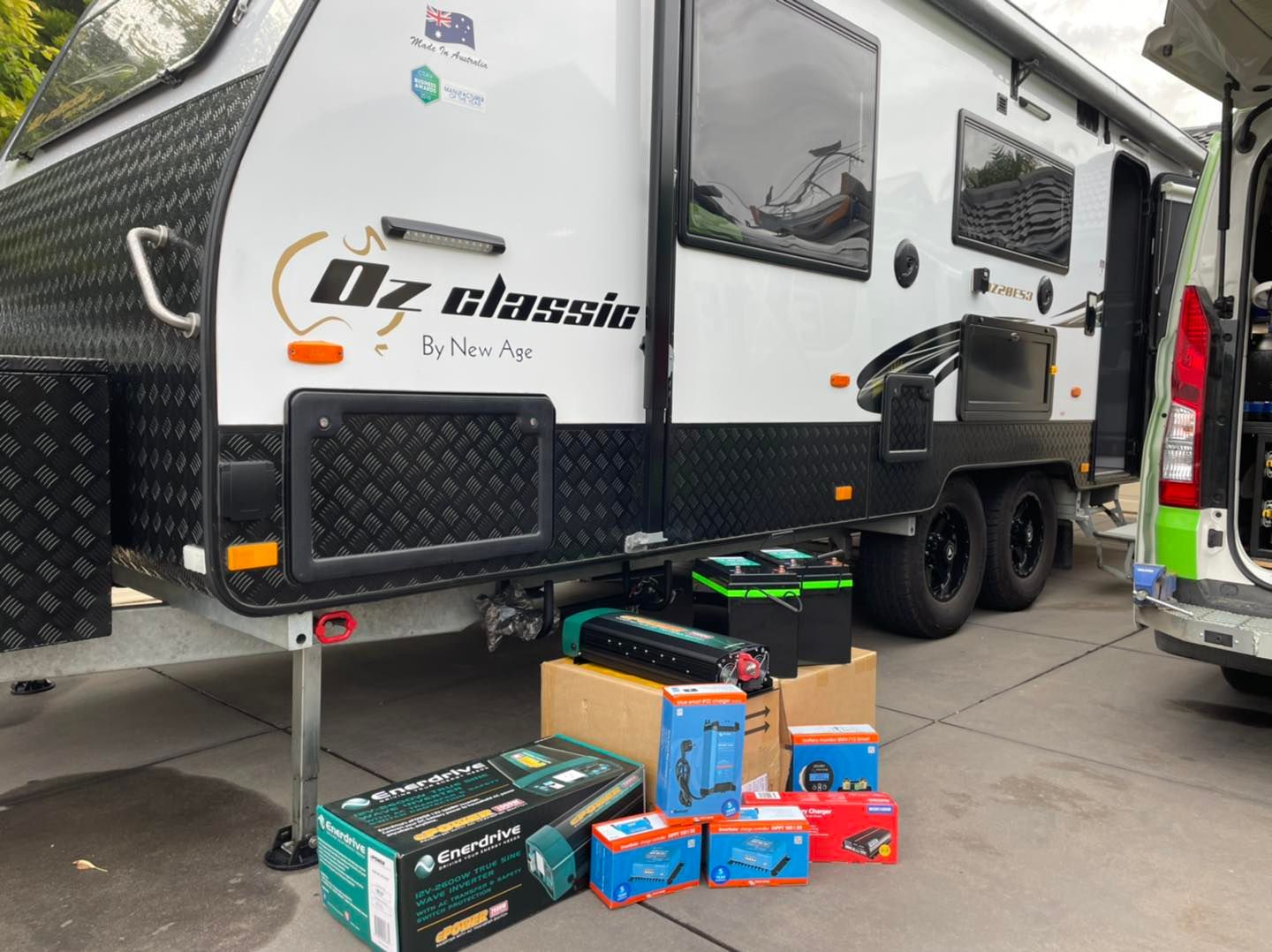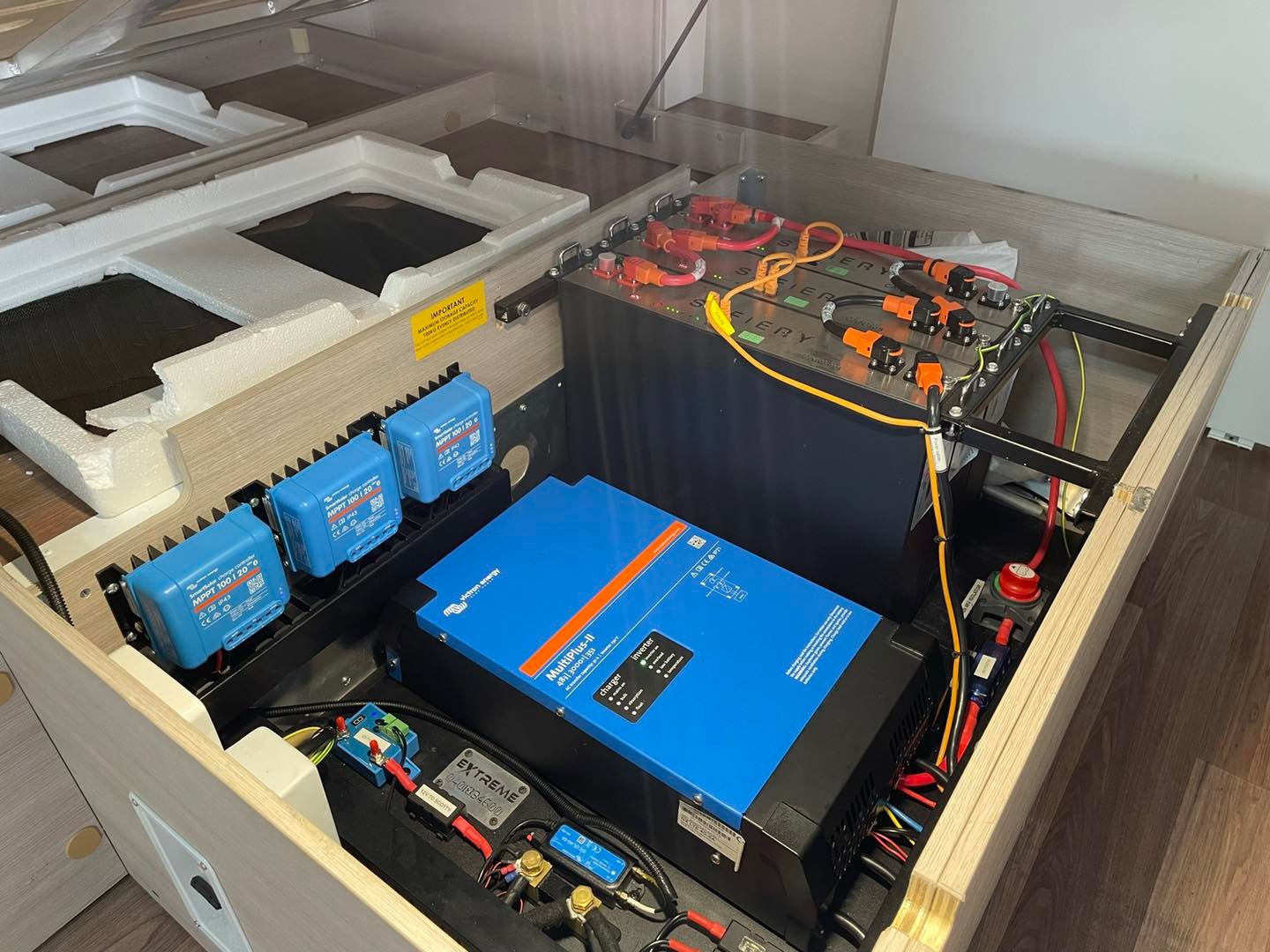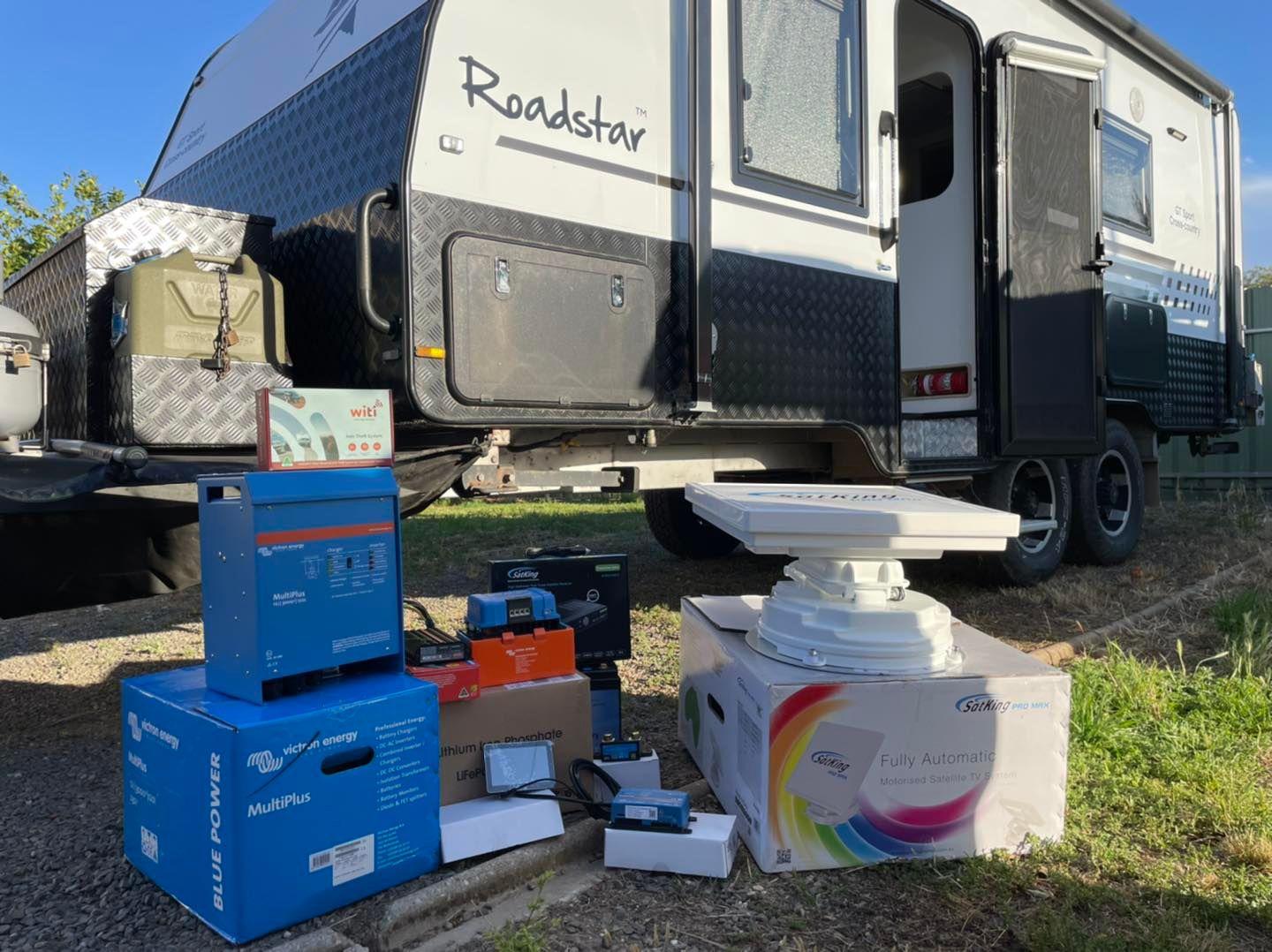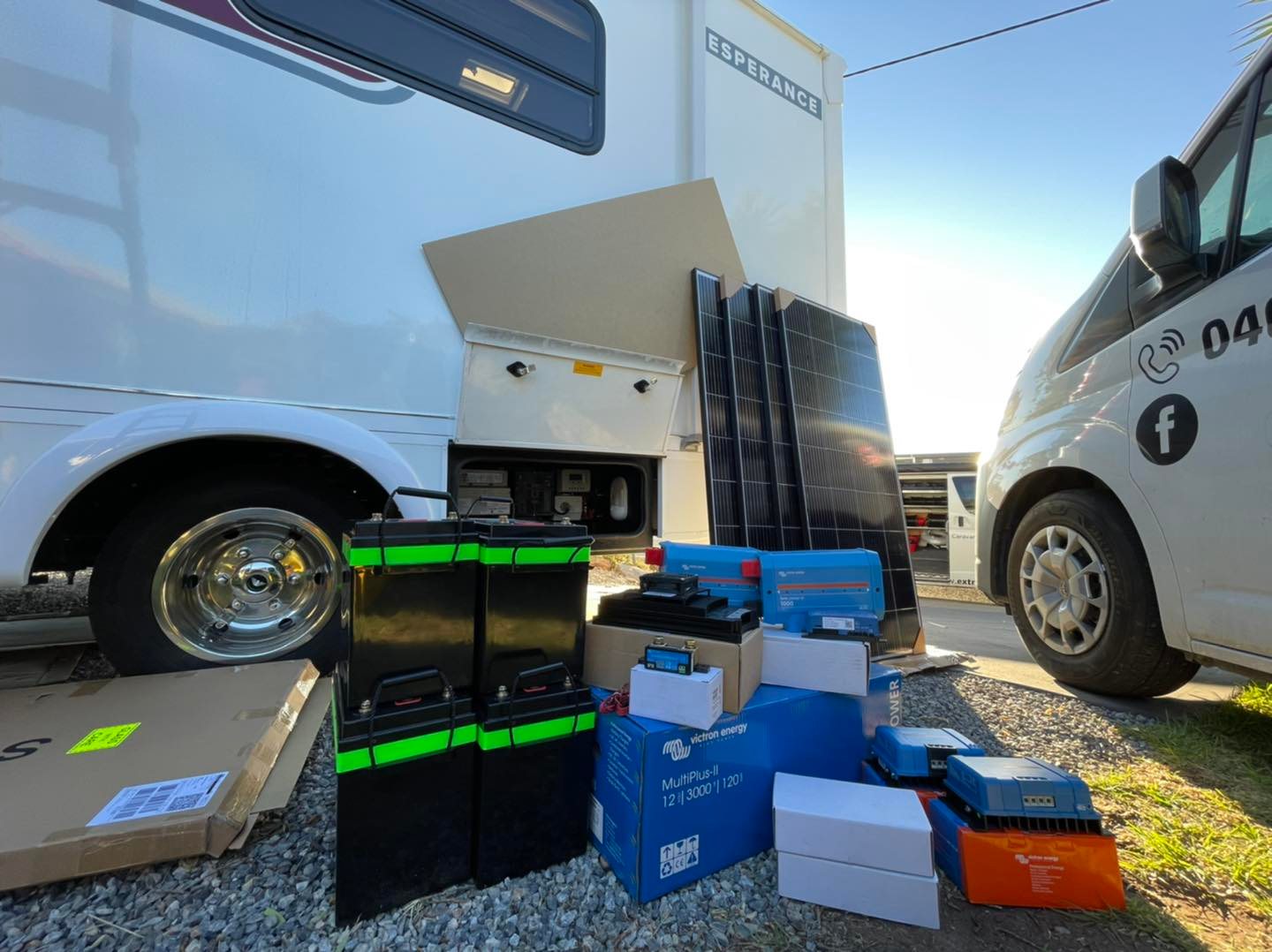If you’re wanting to bring the luxuries of home into your free camping experience then look no further.
Our complete off-grid setups are designed for your exact power needs. From running a simple laptop or charging cordless drills, to running air conditioners, hairdryers, microwaves and more. Every job is unique and quoted completely based on your needs and lifestyle.
The big three.
When we go free camping, we have three main charge sources.
- Mains power, (plugged into a 10amp supply or a 15amp supply, usually at a caravan park.)
- Solar, both roof mounted or portable.
- Vehicle, alternator charging while the engine is running.
When free camping we mainly rely on only two of the above, solar and vehicle charging. If we can maximize both of these charge methods, we are doing the best we can in order to keep the batteries topped up at all times. My rules for this are simple. You can never have too much solar. The regulator takes care of what’s required. Too little and you will not get the most out of the system. It all comes down to roof space, weight and budget.
Flat mounted panels will only produce peak power around the summer months. As a general guide for this, work on about 6-7amps from every 100 watts of flat mounted solar you have in good peak sun. If you have 1000 watts of solar, that’s 60-70amps of charge all from the sun.
In regards to the vehicle charging a similar approach applies with the exception not to overload or rob the alternator of too much power. Dc to Dc charging on a large scale does this. Anywhere from 25amps right up to 200amps, all from the alternator. As an added bonus with ALL of our systems, you are able to charge from your roof mounted solar system AND vehicle, ALL AT THE SAME TIME. What this means is unbelievable charge rates to replenish your battery bank FAST. We design all of our systems with this approach in mind.
Battery management is crucial to any off-grid setup both small and large. You need to know what’s going on and how much battery capacity remains.
From simple smart shunts to more integrated CAN bus systems with tank sensors, remote monitoring and programming. We only use and recommend the highest quality battery management systems available, customized to suit your needs.







